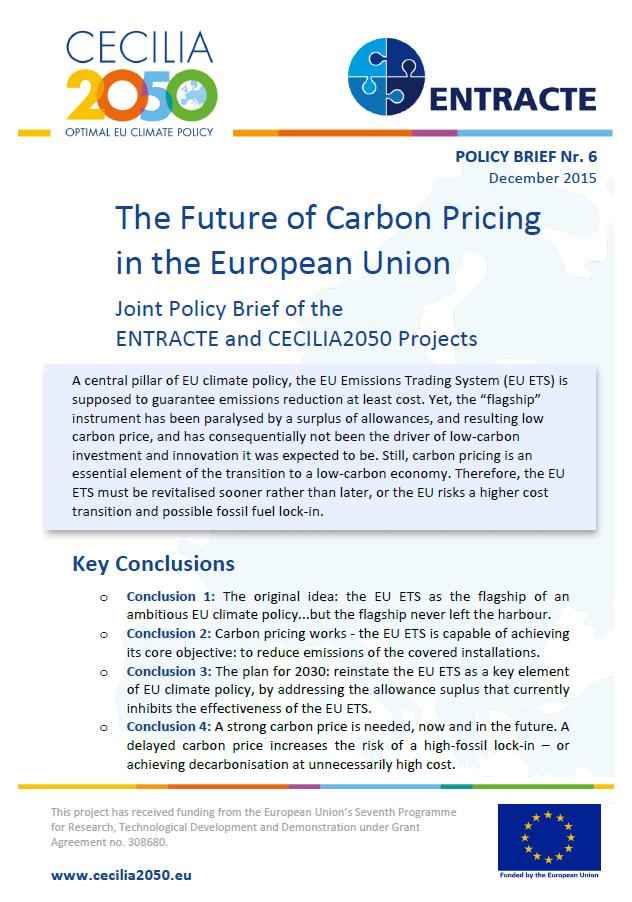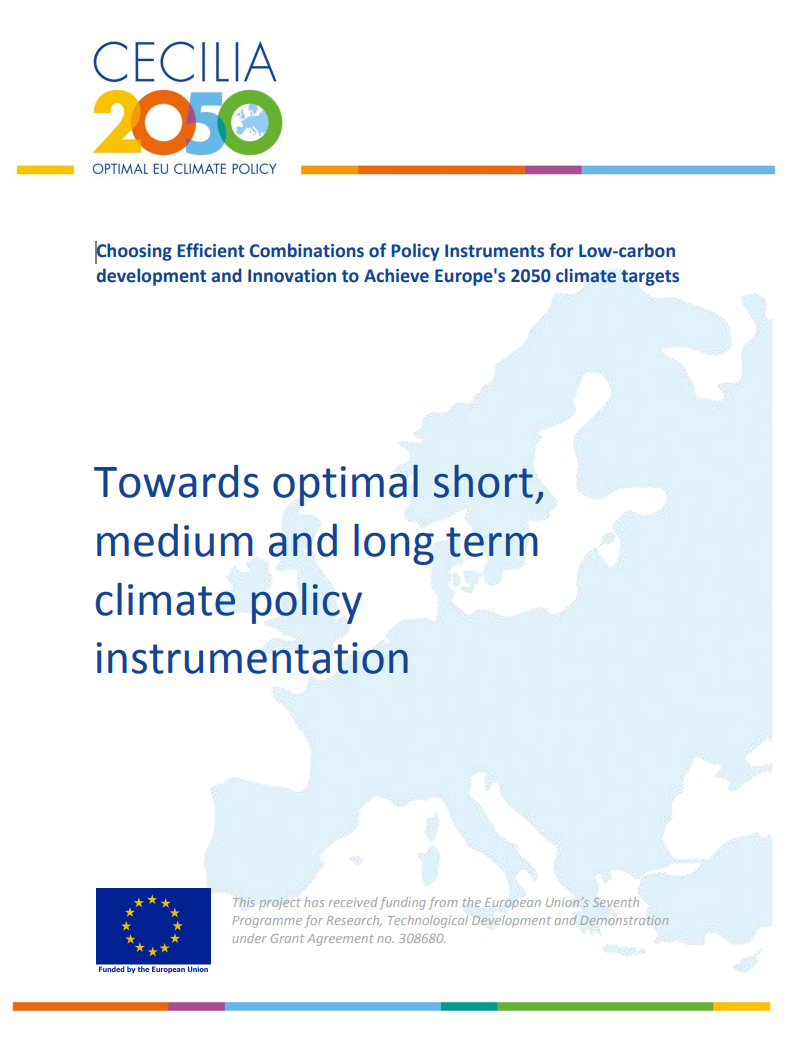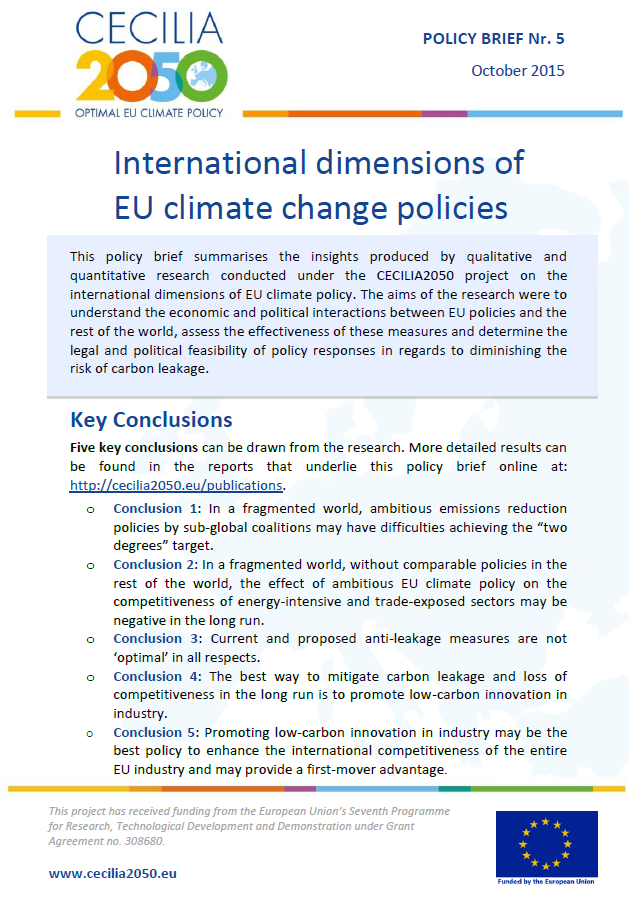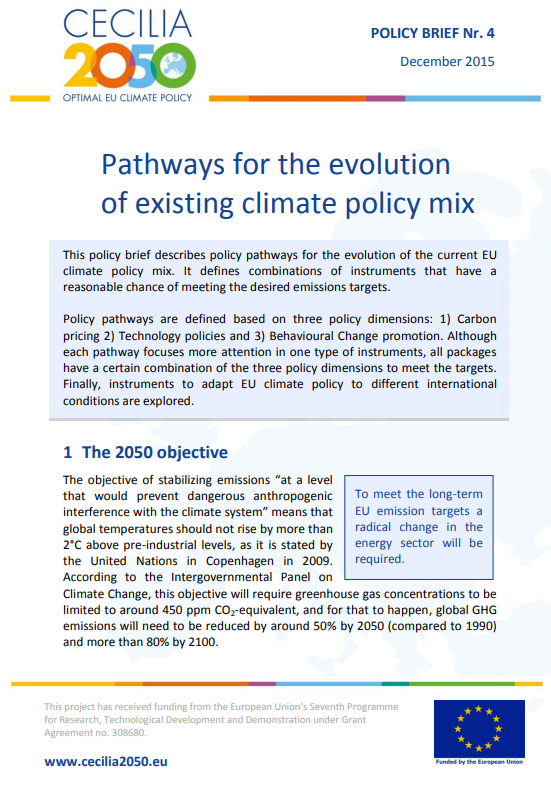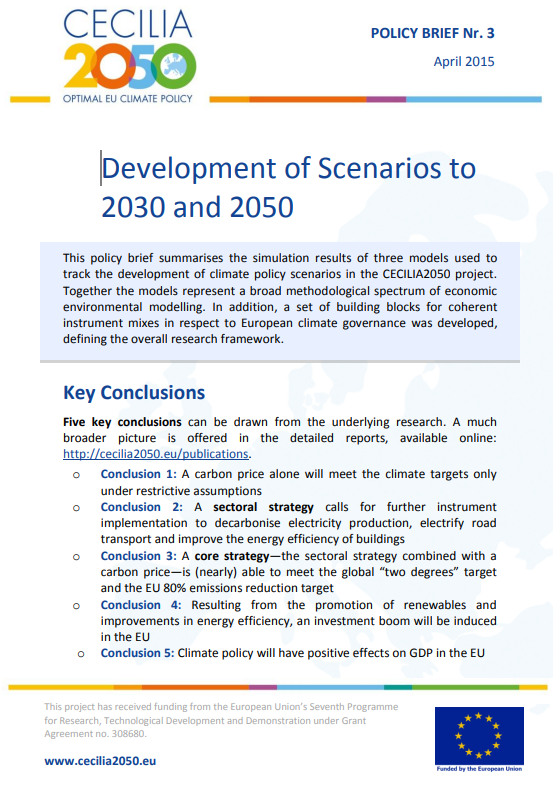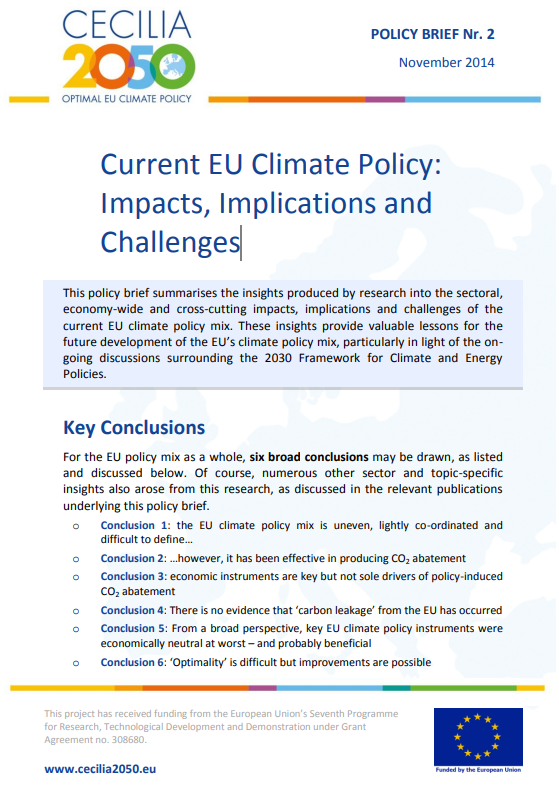Climate Policies and the Transport Sector
Analysis of Policy Instruments, their Interactions, Barriers and Constraints, and Resulting Effects on Consumer Behaviour
- Publication
- Citation
Máca, Vojtěch et al. 2013: Climate Policies and the Transport Sector. Analysis of Policy Instruments, their Interactions, Barriers and Constraints, and Resulting Effects on Consumer Behaviour.
As part of the project CECILIA2050, which examines policy options to improve European climate policies, this report specifically analyzes greenhouse gases reduction potential in the transport sector. After giving an overview of policy instruments in this sector, the authors review transport elasticities and highlight limits to carbon pricing in the road transport sector.
The report is available for download.
- Language
-
English
- Authorship
-
Vojtěch MácaMarkéta Braun KohlováJan NovákMilan Ščasný
- Funding
-
European Commission, Directorate-General Research & Innovation (DG Research & Innovation), International - Year
- Dimension
- 151 pp.
- Project
- Project ID
- Table of contents
-
Click to show full table of contents
Executive Summary
1. Policy Instruments in the EU transport sector - an overview
1.1 Interactions and policy mixes
1.2 Road transport
1.3 Non-road modes
1.4 Effectiveness of instruments
1.5 Cost-effectiveness
1.6 Concluding notes2. American vehicle emission regulation schemes
2.1 Recent developments
2.2 Policy assessment3. Review of transport elasticity
3.1 Transport demand and elasticity
3.2 Patterns in the observed elasticity values
3.3 Selected individual elasticities
3.4 Specific estimates and modelling process
3.5 Trends in price and income elasticities4. Limits to carbon pricing in the road transport sector: barriers, constraints, and path-depndencies
4.1 Fuel tourism
4.2 Company car tax policies
4.3 Second hand car markets
4.4 Conclusions5. Soft transportation policy measures
5.1 Mobility management / Soft transport policy measure - the definition
5.2 Are soft policy measures effective? The evidence
5.3 Long-term effects
5.4 The effects of individual policy design
5.5 Known biases and limitations in the empirical evidence gathered
5.6 What is needed: agenda for future research
5.7 Prospective theory of behavioural change - major requirement for applicable knowledge
5.8 Summary of policy relevant findings - elevator6. Total cost of ownership of electric vehicles under various incentives
6.1 Introduction
6.2 Methodology
6.3 Results
6.4 Discussion
6.5 Conclusion
6.6 Appendix7. Valuation of individual preferences for low-carbon passenger vehicles - a review
7.1 Introduction
7.2 Review of European valuation studies
7.3 Willingness to pay for vehicle attribute
7.4 Conclusions8. References
- Keywords
-
CECILIA2050, climate policy, carbon pricing, private transport, greenhouse gas reduction, emissions, taxes, air pollution, climate changeEU, European Union
Combining Policy Instruments to Achieve Europe's 2050 Climate Targets (CECILIA2050)
- Duration
-
-
- Funding
-
European Commission, Directorate-General Research & Innovation (DG Research & Innovation), International
